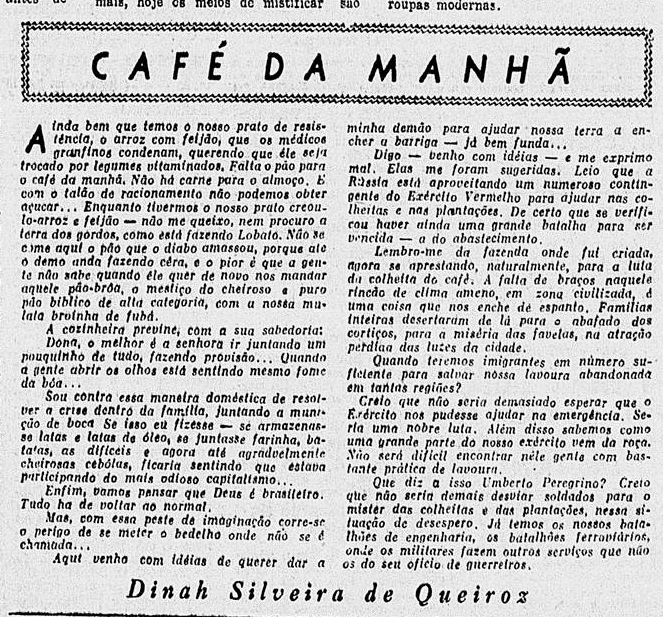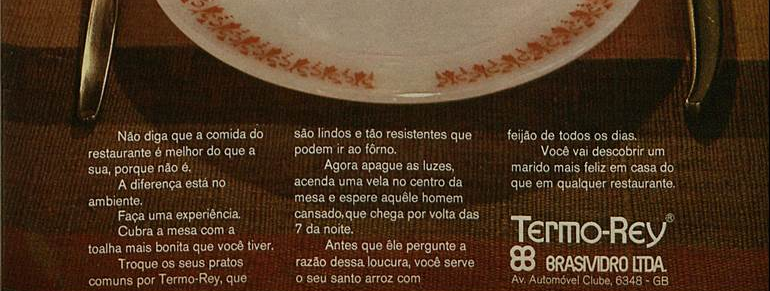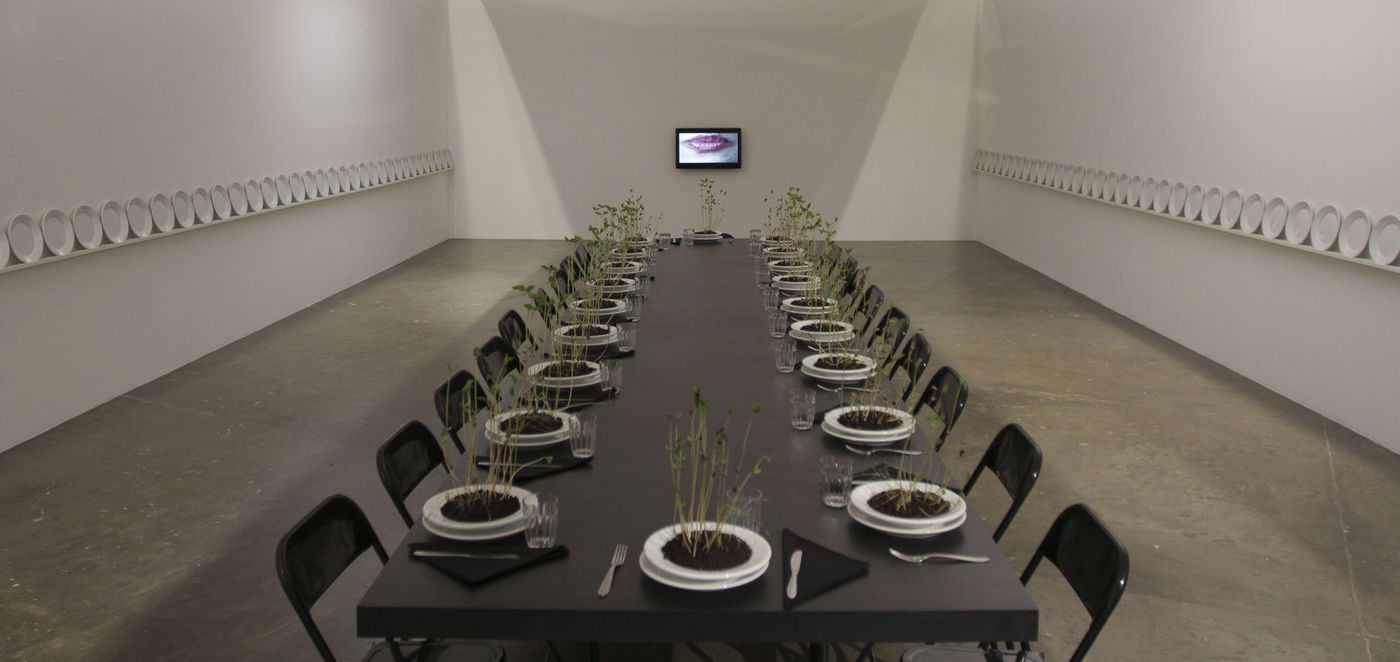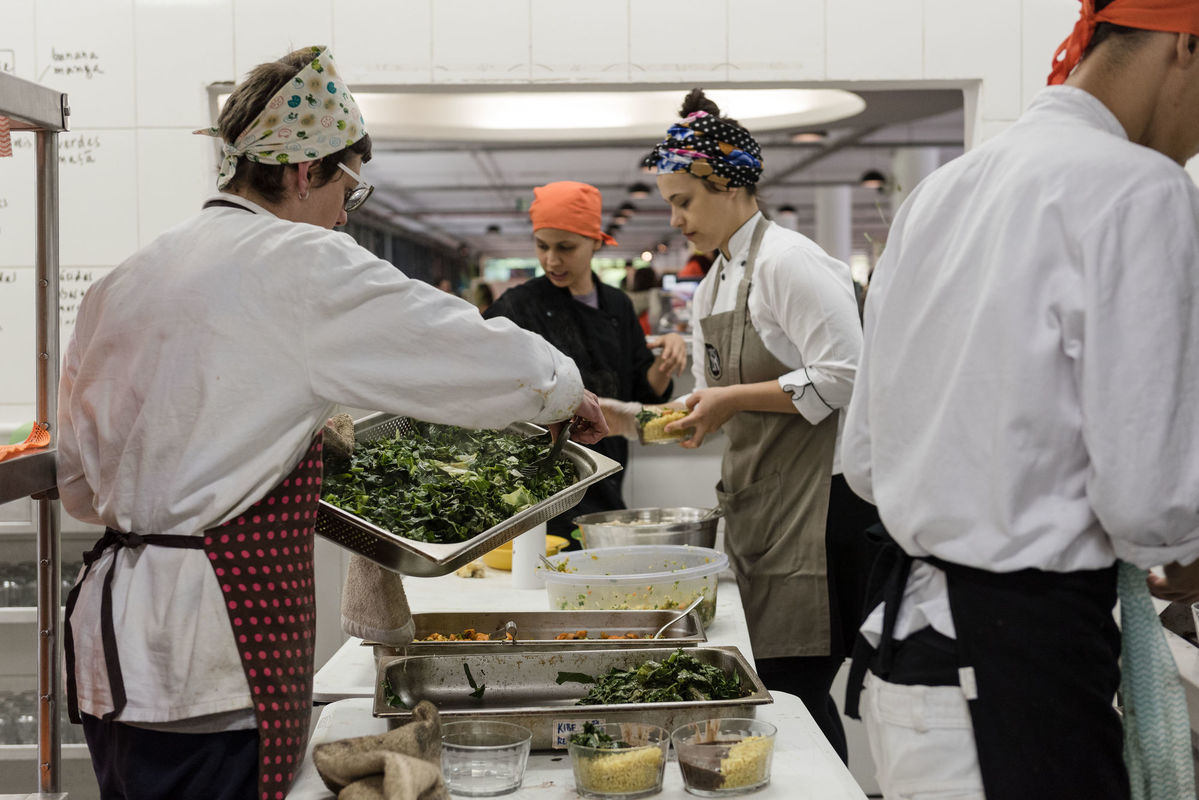“The country is so well-favoured that if it were rightly cultivated it would yield everything, because of its waters.” Perhaps you are not familiar with this phrase, in these terms, which was written back in 1500, in the “Letter of Discovery of Brazil”, also called “Letter of Pero Vaz de Caminha”, but you are likely to have heard that “in Brazil, whatever is planted, it will be yielded”, an idea that is derived from the words of Pedro Álvares Cabral’s fleet clerk. Since then, this maxim that Brazil is a land of abundance has been repeated many times, in many ways. But abundance of what? And for whom? What items from this land, capable of providing so much abundance, get to the population’s table? How many crops end up on our plate? If we think about everyday food, some of the ingredients that are frequently found in our pantries stand out, especially two kinds of grains, present as in cheap “one-plate” meals as in exquisite dishes, such as the Italian risottos, or regional dishes, such as the “baião de dois”. That’s right, we’re talking about them, two versatile ingredients full of flavor and history, and which were also objects of reflection through art: rice and beans. From a brief story about the appearance of these two ingredients on the Brazilian cuisine, we will see the creation of the grains, transformed, by the hands of Anna Maria Maiolino, and its dialogue with the agroforestry abundance in the work of Jorge Menna Barreto, in works that were exhibited in different editions of the Bienal – this is today’s menu.
Pillars of the “holy dish”
It is true that the presence of rice as a staple food is far from being exclusive to Brazil: it plays this role on the diets of two thirds of the world’s population, especially in areas where this crop – in the “white” and “red” varieties – has been present for millennia, both in different areas of Asia and in the central-west regions of the African continent. Even beans, in their many varieties, are a staple in diets around the world. They can be cooked in broths, served as loose seeds, made into pastes or dumplings, and often prevail in many dishes. Now, this practice of presenting them as a pair – which is considered nutritionally perfect! – and as a staple, this we can state is typical of Brazilians, even if this combination is more or less recent in our history.
There is some consensus regarding the origins of the domestication of rice (Oryza sativa), that is, the understanding of the process of its reproduction and its planting by humans: on the banks of the so-called “Blue River”, the Yangtze, in present-day China, at least 8 thousand years ago. To get here, it traveled a long path in time and space: it was cultivated in Asia, traded through routes that crisscrossed that continent, mostly led by the Arabs, known in Europe from the sale and consumption in conquered spaces, such as the Al-Andalus, in what is now part of the Iberian Peninsula – where Portugal is located, which colonized part of America – and, as early as 1587, we find records of the first attempts to introduce its crop in Bahia. And it would still take some time for this plantation, in fact, to establish itself and gain more diffusion and importance in the tropics, since the most constant and consistent news about the flooded fields characteristic of rice crops appear in the 19th century.
Although this “white” variety has become the most widespread in Brazilian meals, it is interesting to note that another of its “types”, Oryza glaberrima, also called “African rice” or “lowland rice” – whose Domestication took place in West Africa 3,000 years ago –, played an important role in past diets. Landed in the hard and long-lasting process of enslavement, which gave shape and deep scars to our country’s formation, this cultivar of rice was grown in large quantities, especially in Maranhão, until 1772, when its cultivation was prohibited.
Beans, on the other hand, have an unclear origin, as its varieties – including Phaseolus and Vigna – have been consumed by populations in different parts of the globe since antiquity. In America, records point to their presence in regions corresponding to present-day Peru and Mexico between 5,000 and 9,000 years before Christ. In addition to its affinity with the climate, its durability and ease of transport made beans a frequent item among the junk transported by drovers during the colonial period. Despite being known for a long time, beans, as well as this territory, have also been transformed. And this long after Brazil achieved its political emancipation, became an Empire, a Republic or declared the end of slavery. It was only in the mid-1970s that one of its most consumed varieties in Brazil today – the pinto bean – was first noticed for its productive capacity and had its cultivation systematized. And it would take a few more years for this cultivar to take the place of its competitors and, along with rice, make up the famous combination.
And that wasn’t that long ago either… It was only at the end of the 19th century that these two ingredients that were usually consumed in different recipes started to be put together on the plate. The spread of rice paddies made this white grain more accessible, which, together with beans that had been cooked here for a long time, ensured that hunger was easily and cheaply satisfied. This is why, at the beginning of the 20th century, eating rice together with beans was considered a popular food, often referred to as a “poor man’s dish”, and therefore undervalued.

It wasn’t until the 1940s and 1950s that rice and beans came to be affirmed as the national dish, with the junction between nationalism and the incorporation of the masses into a political-cultural discourse – of which Getúlio Vargas, president of Brazil between July 20, 1934 and October 29, 1945, and again between January 31, 1951 and August 24, 1954, is one of its greatest expressions. From “poor people’s food”, the combination of rice and beans was elevated to the position of a typical Brazilian dish – the “holy dish of everyday”.


Sowing for the dish, rescuing roots
These foods, however, were not restricted to our history, our plates, and the identity discourses surrounding them.
Conceived in 1979 and held again at the 29th Bienal, entitled Há sempre um copo de mar para um homem navegar [There Is Always a Cup of Sea to Sail in] in 2010, Anna Maria Maiolino’s work Arroz e feijão [Rice and Beans] is rich in provocations that make us reflect on our past and our present. Maiolino exposes, on a black dining table, white dishes with earth in which the two essential ingredients germinate. In its first assembly, during the Military Dictatorship, there were two other tables in the room with empty plates so that in only one of them a third of those present could effectively participate in the work, eating rice and beans – a representation of the tiny fraction of the world’s population with access to basic food. During the meal, there was a discussion about what the work raised for reflection with regard to Brazil. All this around the central table assumes a dual role, as it appears as a kind of catafalque in an almost funerary arrangement, but which also evokes the resurrection of that food, that people, that land. “The seed resists, […] it sprouts in any situation, often even inhospitable”, says the artist in an interview for Sesc TV in 2011.

Another work that expands on this idea and touches on similar points to Maiolino’s Arroz e feijão, which can be traced back to Caminha’s words more than five centuries ago, is Restauro [Restoration], by Jorge Menna Barreto. Part of the 32nd Bienal, Incerteza viva [Live Uncertainty], from 2016, is a work that, like a restaurant, provides food to the visitors of the pavilion. Through the different meanings of the Portuguese word “restauro” [“restoration”] – in art and agriculture, but not only –, it makes explicit the relationship between the food we eat and the consequences of its production system by placing a model of food production in evidence and directly integrating the spectators of the montage as diners.
As visitors are fed the meals prepared with ingredients – most of them of native origin, far from the “conventional” – coming from agroforestry systems, they become part of the work, absorbing its stimuli through the palate and the digestive system. Such stimuli are designed in order to contrast the environments resulting, on the one hand, from monoculture and, on the other, from agroforestry – such as, for example, the reproduction, while eating, of sounds captured in each of these contexts. A work that advocates for the de-internationalization of taste, attention to what bears fruit in the lands here – and which has always borne fruit, since long before Portuguese colonization –, to be valued and cultivated in a sustainable way.

It is worth remembering that agroforestry is an agricultural production system theorized between the 80s and 90s of the 20th century, based on the concept of “syntropic agriculture”, developed by the Swiss researcher and farmer Ernst Götsch, based on his experiments and work in a farm in the state of Bahia. Despite the recent elaboration of these definitions, and the systematization of intervention techniques, the agroforestry system refers to ancestral ways of extracting food from the earth, in which the relationship between human and environment is established not as a relationship between dominant and dominated, but from a sustainable integration in which a variety of species interact in order to reach a status of equilibrium. These two models of food production mobilize concepts formed based on our past to rethink the way we deal with land occupation and exploitation.
On the field, at the table, on the screen and in the pavilion
Walking through this brief historical retrospective on rice and beans, and what the works of Maiolino and Menna Barreto raise, we can say that Brazil is and always has been, since before Cabral and Caminha, a virtuous land, although this virtue has not always been widely used for the benefit of all its population nor has it been available to everybody. We also see that what we consider “natural”, “common”, is the result of transformations that have occurred over time, transformations resulting from various processes that tell us a lot about our past. History and art feed our ideas and our senses, and even lead us to think and act about the most basic and everyday things we do, like eating – what, how much, when, how, why –, and its implications, yesterday, today and tomorrow. From production systems to the nature of what get – or not – to our plates, laden with identity, cultural, economic and historical meanings. If whatever is planted grows, what kind of crop(s) will we choose to cultivate and reproduce?
¹ “Baião de dois” is a traditional Brazilian dish made with rice and beans along with various other ingredients such as red meat, sausage, bacon, garlic, onions, and parsley. It is typically seasoned with salt, pepper, and cumin. It is a hearty and flavorful dish, often served as a main course. [Translator’s note.]
² “Examples of food combinations of vegetables that are complementary from a nutritional point of view are found in the mixture of cereals with legumes.” Read more in the Guia Alimentar para a População Brasileira [Food Guide for the Brazilian Population], available at www.fsp.usp.br/nupens/wp-content/themes/nupens/assets/pdf/guia-alimentar-para-a-populacao-brasileira.pdf.,
About the authors
Comer História [Eating History] is a scientific dissemination, production, research and public history project developed by three historians who have dedicated themselves, for more than fifteen years, to various themes related to production, consumption and practices regarding food, beverages, the environment and body care. They are: Ana Carolina Viotti, PhD in History (UNESP/Franca) and professor at UNESP/Marília; Gabriel Ferreira Gurian, PhD in History (UNESP/Franca) and Rafael Afonso Gonçalves, PhD in History (UNESP/Franca) and professor at UNICENTRO (Guarapuava-PR).
![Register of the work <i>Arroz e feijão</i> [Rice and Beans], by Anna Maria Maiolino, at the 29th Bienal de São Paulo, 2010](https://bienal.org.br/wp-content/uploads/2023/05/FBSP70622_29BSP_03950-scr.jpg)